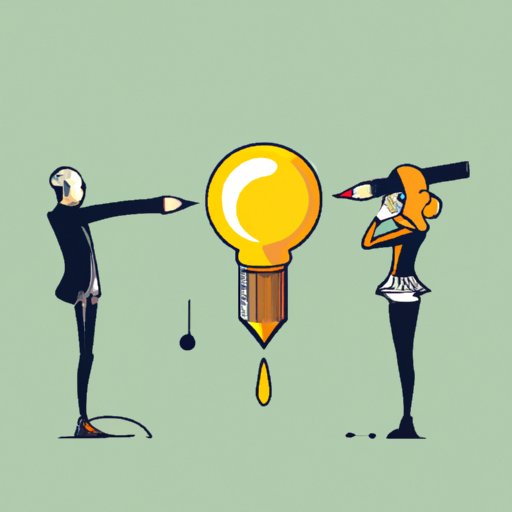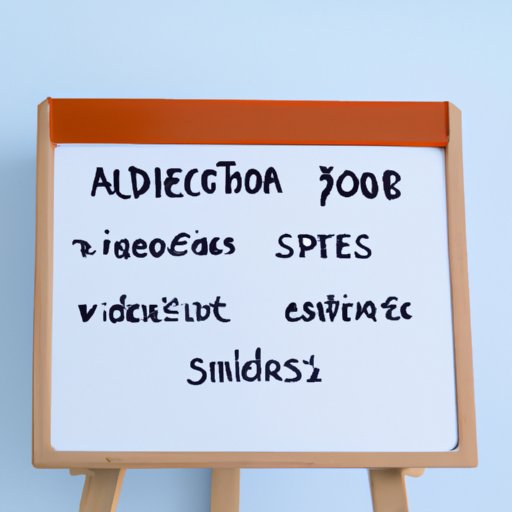Introduction
Creative directors are responsible for leading teams to create innovative and engaging content, whether it’s an advertising campaign, a magazine layout, or a video game. They play an important role in the development of a brand’s visual identity and are essential in any creative field. But what exactly does a creative director do?
A creative director oversees all creative aspects of a project, from concept development to execution. By working with their team to explore ideas, develop strategies, and bring concepts to life, they ensure that projects meet the highest standards of quality and creativity. As such, creative directors must possess a wide range of skills, from leadership and problem-solving to communication and time management.
How to Become a Creative Director
Becoming a creative director requires a combination of education and professional experience. Most creative directors have a degree in art, design, or a related field, such as graphic design, advertising, or digital media.
In addition to a degree, many employers require at least five years of professional experience in the creative field. This may include experience in design, advertising, marketing, or another related field. It’s also important for creative directors to stay up to date on industry trends and technologies.
Licensing and certification are not typically required for creative directors, but some employers may prefer candidates who have completed a certification program or relevant coursework. For example, the American Institute of Graphic Arts (AIGA) offers a Certified Professional Designer (CPD) program that covers topics such as design principles and typography.
A Day in the Life of a Creative Director
Creative directors have a variety of job responsibilities, including overseeing the creative process, developing strategies, and collaborating with other departments. On a typical day, a creative director might:
- Collaborate with other departments such as marketing, sales, and product development
- Brainstorm ideas and develop creative concepts
- Supervise the creative process and provide feedback on designs
- Review progress and ensure projects are on schedule and within budget
- Develop presentations and pitch ideas to clients
The job of a creative director can be challenging. According to a survey by The Creative Group, the most common challenges faced by creative directors are tight deadlines (41%), limited budgets (25%), and difficulty finding qualified talent (14%).

The Essential Skills of a Creative Director
Creative directors need a variety of skills to be successful in their role. These include:
Leadership
Creative directors must be able to lead their team and manage the creative process. This includes setting goals, delegating tasks, and motivating their team to reach their full potential.
Problem-Solving
Creative directors must be able to think outside the box and come up with innovative solutions to problems. They must also be able to troubleshoot and make quick decisions when necessary.
Communication
Creative directors must be able to communicate effectively with their team, clients, and other stakeholders. This includes being able to clearly articulate ideas and give constructive feedback.
Time Management
Creative directors must be able to manage their time efficiently. This includes setting deadlines, tracking progress, and ensuring that projects are completed on time and within budget.

Creative Directors: Making Ideas Come to Life
Creative directors are responsible for bringing ideas to life. They must be able to inspire creativity in their team and develop strategies to ensure that projects are successful. This includes identifying new opportunities, exploring innovative concepts, and developing effective campaigns.
Creative directors must also collaborate with other departments to ensure that projects meet the needs of the client. This includes meeting with clients to understand their needs and expectations, and providing guidance and feedback on designs.

Interview with a Creative Director
We spoke with Rachel Smith, a creative director at a marketing agency, about her career path and advice for aspiring creative directors. Here’s what she had to say:
“I started my career as a graphic designer and worked my way up to creative director. I think the most important thing for aspiring creative directors is to never stop learning. You need to stay up to date on industry trends and technologies, and be willing to take risks and try new things.”
Top Tips for Creative Directors
Here are some tips for creative directors:
- Stay up to date on industry trends and technologies.
- Cultivate new ideas and think outside the box.
- Take risks and be willing to try new things.
Conclusion
Creative directors play an important role in the development of a brand’s visual identity. They must possess a wide range of skills, from leadership and problem-solving to communication and time management. From brainstorming ideas to managing the creative process, creative directors are responsible for making ideas come to life.
(Note: Is this article not meeting your expectations? Do you have knowledge or insights to share? Unlock new opportunities and expand your reach by joining our authors team. Click Registration to join us and share your expertise with our readers.)
